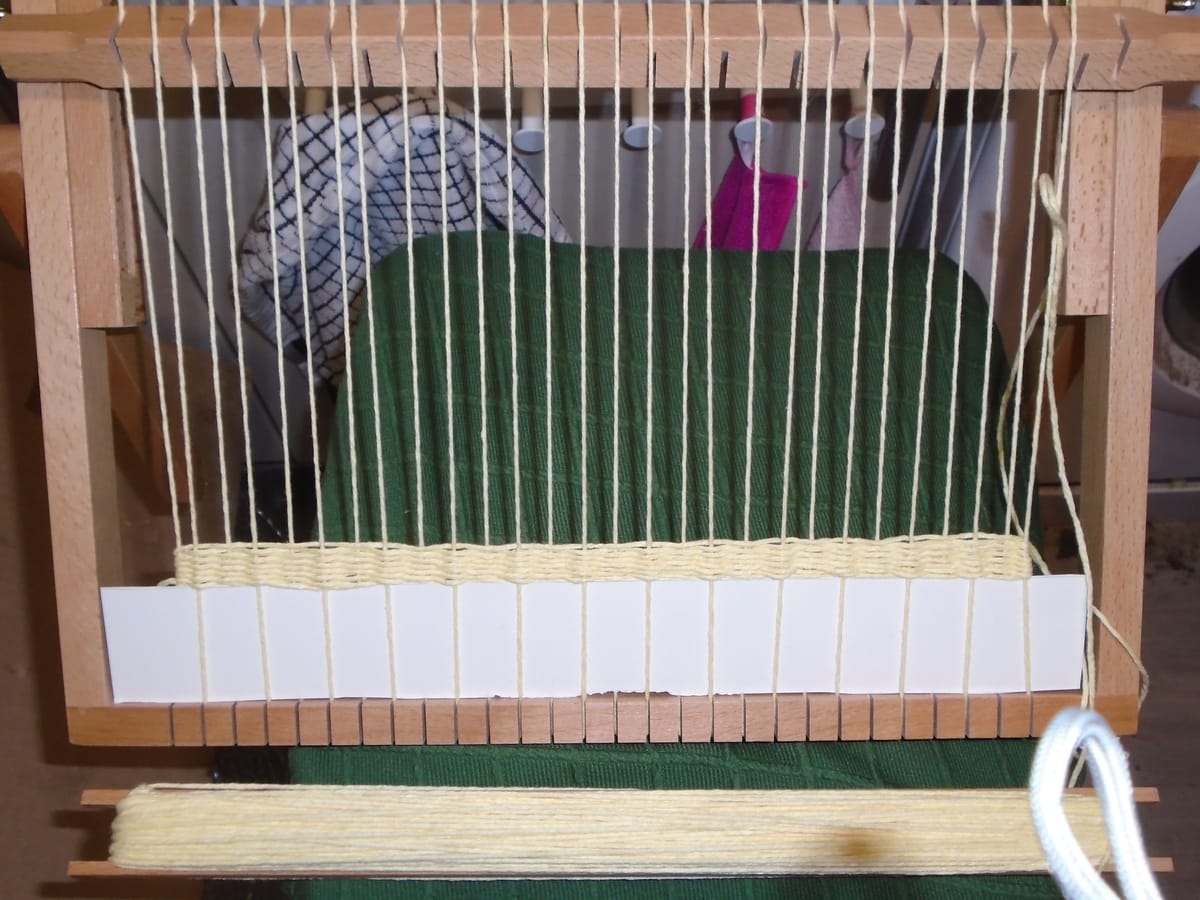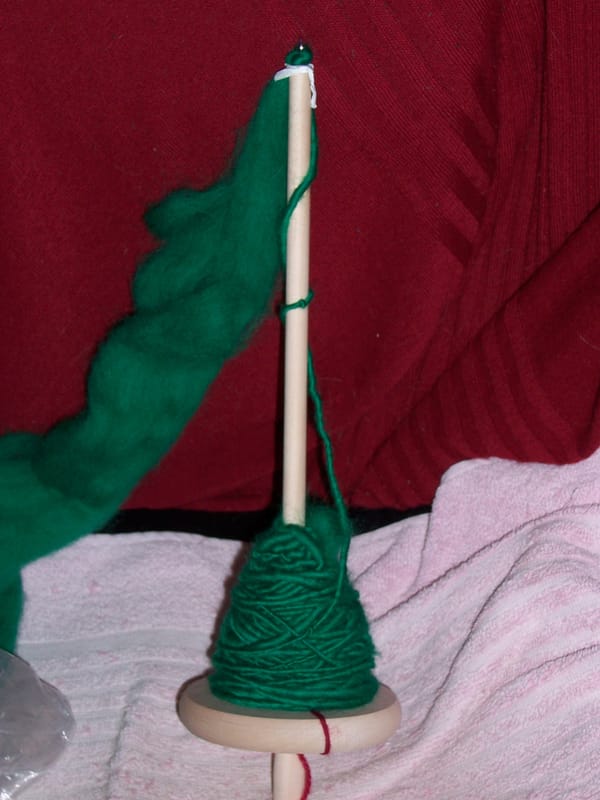A Christmas turkey

I hope you all had a good Christmas... as did I, on the whole. Thanks to the air fryer I was able to cook up a splendid vegan Christmas feast with surprisingly little hassle, and I even managed to source a bottle of vegan zero-alcohol Australian Shiraz. I can't drink alcohol at all now due to my medication, so I was thrilled when I found it, and even more so when I sampled it. It really is extraordinarily good. You would not know it's zero-alcohol.
There was just... one little fly in the ointment. And that fly, sadly, was Millicent the loom.
She arrived two days before Christmas and I was beyond excited, though I have to say that that excitement started to pale a little once I got her out of the postal packaging. On the website, they just showed a photo of the loom, not all the stuff on the back of the box; and on the back of the box, there are the instructions, in the course of which the loom is shown doing what I call "messy weaving". You know the sort of thing. It's that modern thing people do where they weave all sorts of odds and ends together of different thicknesses, sometimes even using roving, and then they take it off the loom and call it a wall hanging. I don't do that. I make no claim at all to be a tidy or organised person, but my crafts are neat. Pretty much obsessively so. I have no time at all for messy weaving; I want to make functional cloth. However, I got Millicent out of the box anyway and warped her up.
Well, you see the results in the photo. The warp threads are much too far apart for the weight of the yarn; this is actually a cotton yarn which is meant to be DK but veers heavily towards aran, so it's awkward to knit with, because it's too heavy for DK patterns but too light for aran ones. You could probably just about use chunky weight, but anything heavier wouldn't go in the slots, and in any case the warps would still be too far apart. So you are not going to get a stable fabric.
Oh, and that thing at the top? That's the warp separator, that is. Just looking at it on the website, I thought it would be a great idea, because unlike a heddle it would leave both hands free for weaving; well, it does, but that is all it does. It's good in theory, but it leaves a very narrow shed through which it is difficult to pass a full shuttle, so the upper set of warps gets pulled to one side and some of them inevitably fall into adjacent slots, so you then have to sort all that out before you turn the warp separator again to raise the other set. It's so slow. I can knit faster.
I concluded I'd bought a toy by mistake (it is, actually, a lot worse than the toy rigid-heddle loom I had as a child!), and sent various e-mails to both the vendor and the manufacturer detailing exactly what was wrong with it, majoring on the fact that it wasn't fit for the purpose for which I'd bought it. The vendor was not helpful. They said I couldn't return it because I'd used it; however, they did admit that perhaps their description on the website needed to be amended. (They also said it wasn't a toy, but it was designed for adult beginners. Honestly, though, it'd put any adult beginner off weaving for life.) So I politely suggested to them what I thought they should put on their website, put the blamed thing up for sale as a toy suitable for children aged 8+, and went looking for a proper loom. Which by now, I was fairly sure, meant another Ashford.
Ashford are owned by a company called Frank Herring & Sons, so I e-mailed them explaining what I was looking for. I got a very nice reply, including a phone number, so the following morning I had a good chat with Mr David Herring (who is an expert weaver) about looms, and I ended up ordering Alice. Alice is a 40 cm Ashford SampleIt; she's another rigid-heddle affair, but she is to that thing I had as a child pretty much as a first-class professional touring bike is to a Raleigh Chopper. She will arrive with a full set of reeds (these are what you use to alter the warp gauge, so you can use different thicknesses of thread/yarn) and a helpful book. Mr Herring was also able to give me some excellent advice regarding linen, which I plan to use for the diary pouch. He said a lot of people will tell you that you can't weave linen on a rigid-heddle loom, but in fact you can and he regularly does. The thing is, linen has zero elasticity. So you just wrap it over a bit of craft felt, and the little bit of squish in the felt is just enough to compensate for that. The other thing he said was that it pays to damp the weft a little; my linen is on a cone, and if it got even slightly damp on the cone it will be inclined to spring about in coils and not weave too well. So you damp it just enough to relax it, and then it is all laid back and happy and will behave impeccably, and it'll dry the way you've woven it. He did, however, advise me not to jump straight into weaving with linen, so I shall do one or two practice pieces first.
Oh, and he knows all about the Milward. He said he used to stock it, but then a customer brought one back and complained about it. Wanting to investigate why they were complaining, he got it out of the box and set it up...
...and then he immediately pulled all the others off the shelves. So it's not just me! (To be fair to Milward - who are, 99% of the time, a good reliable brand - it appears they don't make it themselves. Mr Herring has seen exactly the same loom under different branding, so Milward - who probably don't have anyone who knows anything about weaving - will have just bought a batch in and stuck their name on it, not knowing what they'd got. Mind you, following my e-mail to them, they do now.)
Anyone want to buy a loom that weaves strictly decorative pieces? There's got to be some kid out there who'd be thrilled with it!




